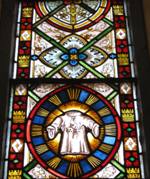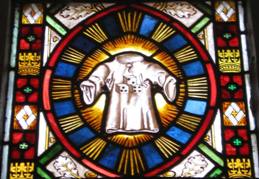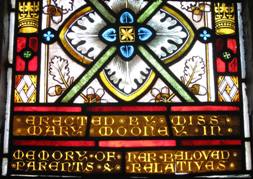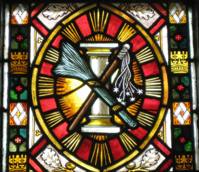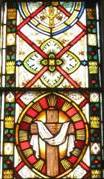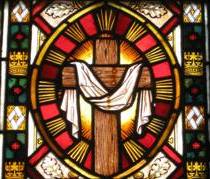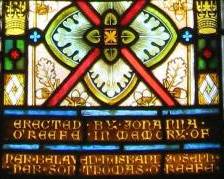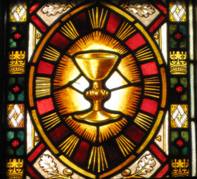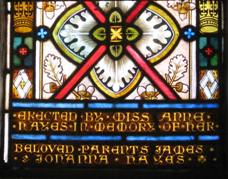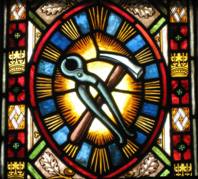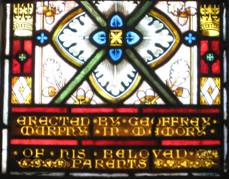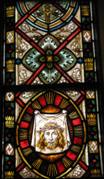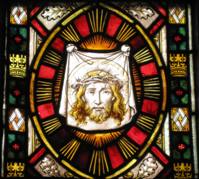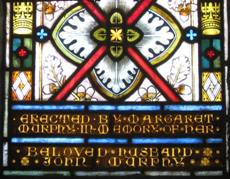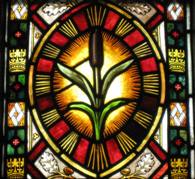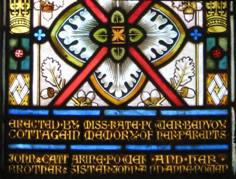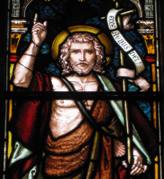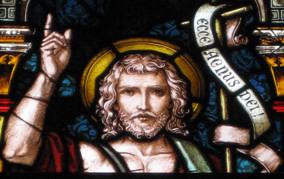The sixth nave window
This window is difficult to photograph as it is partially hidden by the gallery. These photos were taken while kneeling on the floor and pointing the camera almost vertically. That is why the window looks so wide at the bottom and so narrow at the top.
The main detail shows a garment and three dice. The garment is the tunic that Jesus was wearing before he was crucified. The word tunic may not be the best translation of the Greek word chiton which means “a long garment worn under the cloak next to the skin”, although the tunic in the window could not be described as long. The tunic and dice refer to the occasion in the gospels when, after Jesus was crucified, the soldiers divided his garments among themselves, except for the tunic for which they cast lots –
“When the soldiers had crucified Jesus, they took his garments and divided them into four parts, one part for each soldier; also his tunic. But the tunic was seamless, woven in one piece from top to bottom, so they said to one another, ‘Let us not tear it, but cast lots for it to see whose it shall be.’ This was to fulfil the Scripture which says, ‘They divided my garments among them, and for my clothing they cast lots.'” [John 19:23,24]
A “lot” is any object that is used to secure a chance decision and may be a stick, a pebble, or almost anything. It may or may not be a die (die is the singular of dice, i.e., we say “One die, two dice”). No one knows what the soldiers used as lots so the three dice are there simply to remind us of the chance way in which Jesus’ tunic was dealt with.
The dedication at the bottom of the window is shown in the image at far right and reads,
MARY MOONEY IN
PARENTS & RELATIVES

